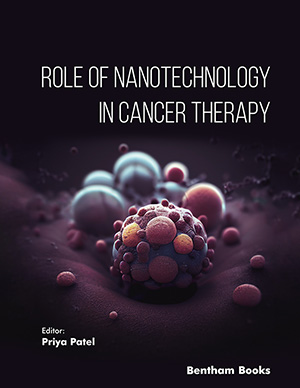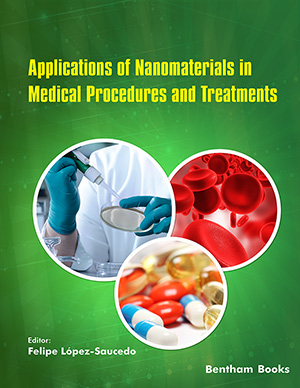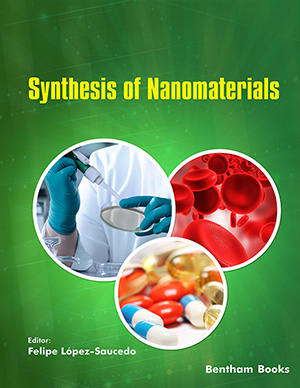Abstract
Recently, there has been a significant increase in the rate and amount of pollutant discharge into the environment. This is extremely worrisome to the human population, especially as it is envisaged to reach 10 billion in the next 40 years. The traditional methods applied for pollutant abatement and recycling exhibit inefficiency and environmental unfriendliness because they cannot effectively transform these pollutants into non-noxious states. Recently, microorganisms and nano-based materials are emerging as highly efficient and eco-friendly alternatives for managing, reducing, and decontaminating pollutant wastes or effluents in the environment. The biosynthesis of these materials has motivated research into developing cheaper, green, and more sustainable yeast, algae, fungi, and bacteria-biogenic nanoparticles, which could be used to clean up heavily contaminated environments. This review evaluates the application of microorganisms (yeast, algae, fungi, and bacteria) with nanomaterials as biogenic nanoparticles to clean up environmental pollutants. The environmental and health hazards associated with the fate of the biogenic nanoparticles, and some legal regulations, are also highlighted. The commercialization of nanomaterials and their possible global application are also documented. Future recommendations were proffered.
Keywords: Bioremediation, biogenic nanoparticles, nano-commercialization, bio-nano conjugates, biosynthesis, toxicity.
[http://dx.doi.org/10.1016/j.gene.2011.03.001] [PMID: 21402131]
[http://dx.doi.org/10.21767/2473-6457.10024]
[http://dx.doi.org/10.1007/978-981-15-7459-7_13]
[http://dx.doi.org/10.3389/fmicb.2021.658294]
[http://dx.doi.org/10.1007/978-981-13-1891-7_16]
[http://dx.doi.org/10.1007/978-3-030-11155-7_24-1]
[http://dx.doi.org/10.1201/9781003023197-13]
[http://dx.doi.org/10.1201/9781003023197-8]
[http://dx.doi.org/10.1201/9781003023197-10]
[http://dx.doi.org/10.5772/intechopen.89601]
[http://dx.doi.org/10.1007/978-3-030-11155-7_4-1]
[http://dx.doi.org/10.1016/S0065-2164(03)53003-9] [PMID: 14696317]
[http://dx.doi.org/10.1016/0168-1656(96)01520-9] [PMID: 8862002]
[http://dx.doi.org/10.1016/S1567-5394(03)00043-4] [PMID: 12893307]
[http://dx.doi.org/10.1007/BF03215529]
[http://dx.doi.org/10.1016/j.colsurfb.2009.07.040] [PMID: 19700266]
[PMID: 23678420]
[http://dx.doi.org/10.1049/iet-nbt.2012.0041] [PMID: 24028809]
[http://dx.doi.org/10.1039/b503008k]
[http://dx.doi.org/10.1260/026361703772776420]
[http://dx.doi.org/10.1007/s41204-017-0029-4]
[http://dx.doi.org/10.1016/j.jtice.2017.04.017]
[http://dx.doi.org/10.1039/c2ee21818f]
[http://dx.doi.org/10.3390/molecules23071760] [PMID: 30021974]
[http://dx.doi.org/10.1186/s12951-021-00834-3] [PMID: 33771172]
[http://dx.doi.org/10.3390/molecules26103027] [PMID: 34069487]
[http://dx.doi.org/10.1155/2021/1774528]
[http://dx.doi.org/10.3390/w11071419]
[http://dx.doi.org/10.1155/2014/359316] [PMID: 27355054]
[http://dx.doi.org/10.31018/jans.v10i4.1878]
[http://dx.doi.org/10.3390/biom10111498] [PMID: 33143289]
[http://dx.doi.org/10.1016/j.jhazmat.2017.04.042] [PMID: 28448880]
[http://dx.doi.org/10.1021/la900585p] [PMID: 19425601]
[http://dx.doi.org/10.1016/j.chemosphere.2018.02.020]
[http://dx.doi.org/10.1080/00986445.2019.1615468]
[http://dx.doi.org/10.1016/j.jenvman.2018.09.094] [PMID: 30296678]
[http://dx.doi.org/10.1021/ar2003368]
[http://dx.doi.org/10.1080/10590500802708267] [PMID: 19204862]
[http://dx.doi.org/10.1186/1743-8977-8-22] [PMID: 21794132]
[http://dx.doi.org/10.1016/j.tox.2009.11.017] [PMID: 19941928]
[http://dx.doi.org/10.1016/j.carbon.2005.11.008]
[http://dx.doi.org/10.4314/jasem.v22i9.10]
[http://dx.doi.org/10.1021/es800086f] [PMID: 18800556]
[http://dx.doi.org/10.1016/j.watres.2009.08.051] [PMID: 19783027]
[http://dx.doi.org/10.1021/es800408u] [PMID: 18678028]
[http://dx.doi.org/10.1016/j.scitotenv.2012.11.073] [PMID: 23247287]
[http://dx.doi.org/10.1016/j.chemosphere.2012.04.020] [PMID: 22595530]
[http://dx.doi.org/10.1371/journal.pone.0043983] [PMID: 22952836]
[http://dx.doi.org/10.1016/j.chemosphere.2011.11.041] [PMID: 22169206]
[http://dx.doi.org/10.1016/j.chemosphere.2012.09.018] [PMID: 23040650]
[http://dx.doi.org/10.1021/es061953l] [PMID: 17533868]
[http://dx.doi.org/10.1016/j.jconhyd.2010.07.011] [PMID: 20813426]
[http://dx.doi.org/10.1016/j.envpol.2012.10.026] [PMID: 23202638]
[http://dx.doi.org/10.3389/fphar.2017.00606] [PMID: 28928662]
[http://dx.doi.org/10.1371/journal.pone.0185554] [PMID: 28953974]
[http://dx.doi.org/10.1002/adhm.202100598]
[http://dx.doi.org/10.1186/s11671-018-2457-x] [PMID: 29417375]
[http://dx.doi.org/10.3762/bjnano.9.98] [PMID: 29719757]
[http://dx.doi.org/10.1539/joh.17-0089-RA]
[http://dx.doi.org/10.1186/s12989-019-0299-z] [PMID: 30975174]
[http://dx.doi.org/10.5194/acp-8-389-2008]
[http://dx.doi.org/10.1098/rstb.2008.0205] [PMID: 19528051]
[http://dx.doi.org/10.1111/gcbb.12200]
[http://dx.doi.org/10.1016/j.trac.2017.10.005] [PMID: 32287543]
[http://dx.doi.org/10.1098/rsta.2008.0138]
[http://dx.doi.org/10.1038/ngeo2248]
[http://dx.doi.org/10.1111/1468-2346.12708]
[http://dx.doi.org/10.1016/j.envpol.2015.11.006] [PMID: 26640153]
[http://dx.doi.org/10.2307/2668517]
[http://dx.doi.org/10.1021/es900464a] [PMID: 19708337]
[http://dx.doi.org/10.1016/S1462-9011(03)00061-3]
[http://dx.doi.org/10.1016/j.envpol.2009.02.016] [PMID: 19272683]
[http://dx.doi.org/10.1007/s11356-012-1089-4] [PMID: 22825640]
[http://dx.doi.org/10.1093/iclqaj/41.3.530]
[http://dx.doi.org/10.1163/15718069920848552]
[http://dx.doi.org/10.1039/c1em10023h] [PMID: 21505709]
[http://dx.doi.org/10.1007/s13205-019-1576-0]
[http://dx.doi.org/10.1016/j.resconrec.2005.12.009]
[http://dx.doi.org/10.1016/j.yrtph.2015.11.004] [PMID: 26603783]
[http://dx.doi.org/10.1016/j.mset.2018.09.004]



























